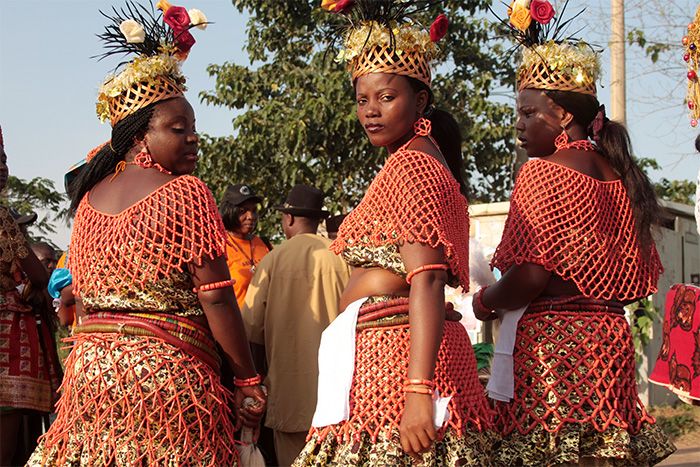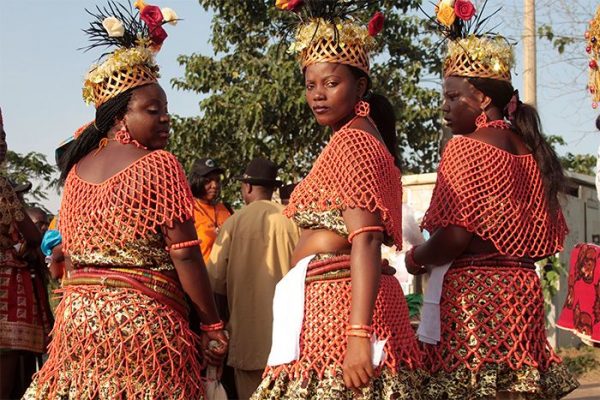The Owan is an ethnic group in the Northern part of Edo State, Nigeria. They are one of the Edoid peoples. Owan is currently constituting two Local Government Areas, namely: Owan East and Owan West, including so many clans; notable amongst them are Ihievbe, Emai people, Iuleha, Ora, Uokha, Otuo, Ivbi-Mion, Ivbi-adaobi, Ozalla etc.
Origin/History
The name Owan, also pronounced Onwan, is derived from the root word “Owanbua” which is a name of a notable daughter of Egomi of Uvbiato. Uvbiato is the present-day – Uhon-mora (Ora). Folklores have it that the matriarchal Owan married at Otuo village but was not blessed with any children. When she died, her burial place became a stream that flowed from Otuo, through many villages in Owan before joining the Ule river which eventually emptied into the river “Ose”. But this is the first account of the origin of the name. There is yet another which is more elaborate.
The second is as follow: The Owan people derive their name from River Onwan/Owan. This is the largest and longest river in the area. A hand down has it that the name Onwan is the abbreviation of Onwanvbua, a name which means one who makes merry in affluence. The hand down goes on to say that this was the name of an Ora woman who got married in Otuo, became quite rich because of her hard work and industry, but died childless after a period of protracted illness and painful abandonment her corpse was not returned as was the custom in the culture. As the corpse decomposed, it turned into a spring spiritually cleansed and patriotically moved, beginning as Usobua stream at Iyen Otuo and finding its way through appropriate lowlands before arriving Uhonmora village (Ora) its “homeland” in great volume where-after it bade farewell and flowed to join river Osse. The people of Uhonmora village deified her and all inhabitants of the village were forbidden to eat any type of fish from the Owan river.
Whenever the people confront a problem, they offer sacrifices to the goddess of the Owan River. The people of Uhonmora regard her as their mother and they depend on her for protection, one suspects she stood for more than what she is remembered for today particularly because she is revered by both males and females in Uhonmora. That tradition of Onwanvbua (Omouwa) has survived in Ora community is indeed quite remarkable. Be that as it may, we may not fully lose sight of the probability that the river, a geographical phenomenon, could pre-date both Ora and Otuo, which are respectively under 600 and 500 years old. The fact that other streams or rivers have no such history in their origin and that streams or rivers do not necessarily spring up, at the creation of planet earth, need not rubbish the myth about Onwanvbua
Myths, Folklores and Tourist destinations in Owan Land
Some of these include:
- The Giant Footprints of Ikhuse-oke and Ikhuse-osi in Owan-West L.G.A: Located in a sacred grove between Ukhuse-oke and Ukhuse-osi in Lulehe clan of Owan west local government area, very distinct footprints of a prehistoric giant are permanently embedded in the flat granite rocks. According to mythology, some believe the footprints were made when the world was still in its molten state.
- The Animal Footprints of Ivbiodohen – Footprints of various species of animals are embedded in a flat granite stab that confounds all imaginations. Legend has it that the footprints were imprinted during the formative stages of the planet earth. The footprints are very detailed and like the ones in Ukhuse Oke, will require an extensive archaeological or anthropological research. Ivbiodohen is in Luleha clan of Owan West Local Government area north of Edo state.
- Arhe Spring in Uzebba, Owan West L.G.A.: Folklore has it that this spring gives water to Uzebba. It is believed that the goddess of this spring is blessed with long breasts and that she impregnates Iuleha with water and lead them to doom.
- The Whistling tortoise in Avbiosi: The Okhaku’roros so perfected the art of wars to a stage that they used magical means to propel tortoise as a signalling device. Tortoise whistle to alert them of wars to come. They planted an Akhuere or ducant tree on a spot in Avbiosi to mark the fetish they named Unuo gboeren. To avoid damnations, hunters dare not pick the whistling tortoise in that vicinity. The Unuo gboeren is a shrine that still stands until today in Avbiosi. In 1976 the Unuo gboeren tree was to give way to a new road being constructed by Niger cat construction company. The road was supposed to be a thoroughfare passing through Avbiosi-new site to Ifon in Ondo state, Nigeria. The timely intervention of Pa Alfred Onime Obuhoro spared this tree and the road was diverted from the shrine. Pa Obuhoro was born under the tree on the 24th of December 1922. This shrine is appeased during severe draughts to bring rain.
Others include Ihievbe Waterfalls, located in Ihievbe, Owan-East L.G.A, which has Water gushing out hot at one point and ice cold at another. The natives claim that the water is medicinal. There are also the lapping rocks of Igwe-sale in Owan-East L.G.A., The Great Hills of Urhoe in Owan-East L.G.A., In Avbiosi (Owan West) there is Agbede Abohi, Akatamiyan Shrine in Ihievbe, Owan-East.
Traditional Structure
Owan people occupy the northern part of Edo State, Nigeria (Edo north senatorial district), they belong to the Edo-speaking sub-ethnic group. Owanland is divided into eleven clans namely. Emai, Ivbiadaobi, Ivbimion, Igue, Ikao, Iuleha, Ora, Otua, Ozalla and Uokha, all of which except Ikao claim to have migrated from Benin. Some of their founders are said to have been expelled from Benin at one time or another. These force migrations were neither organized nor led by leaders appointed by the Oba. This fact partly explains why there is a complete absence of a hereditary chieftaincy stool in the entire Owan.
Sources:
Wikipedia.org
Ogbomo, Onaiwu W. (2002). “The evolution of an ethnic identity: the Owan of mid-western Nigeria”. In Falola, Toyin (ed.). The Transformation of Nigeria: Essays in Honor of Toyin Falola. Africa World Press. pp. 463–482.
Featured Image Source: Love God Love Life Love Music


